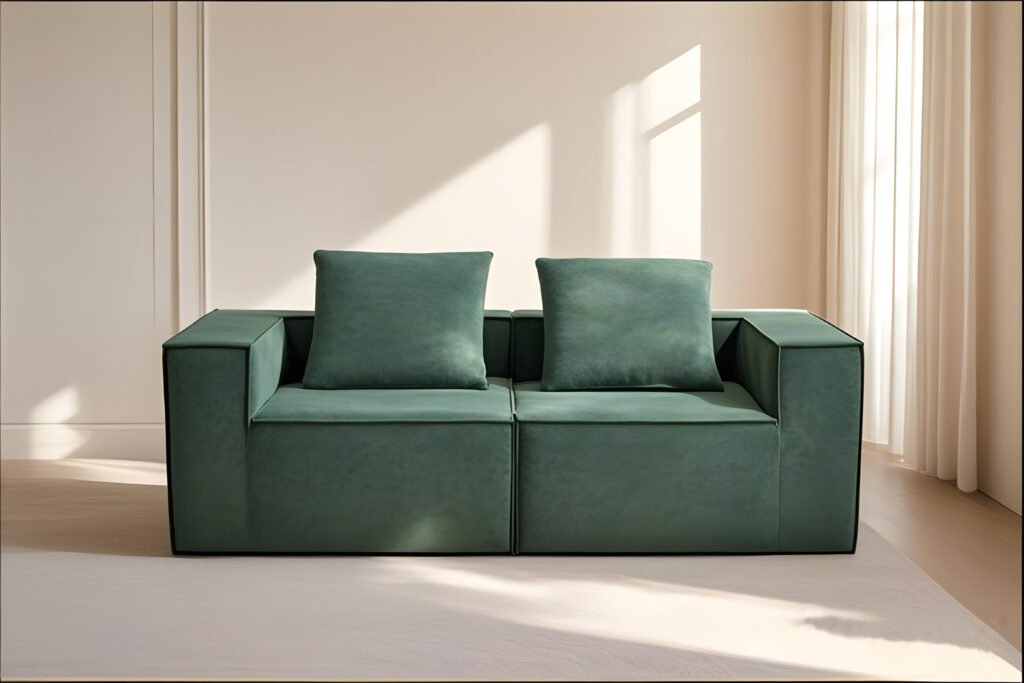Introduction
In the furniture manufacturing and distribution industry, innovation in packaging and product design is critical to meeting the evolving demands of the market. The compress spring sofa has emerged as a leading solution that combines comfort, durability, and logistics efficiency. This article is tailored for B2B stakeholders—including sofa manufacturers, wholesalers, retailers, and logistics providers—who seek to understand the technology behind compress spring sofas, their advantages, and why they have gained significant popularity in 2024.
Understanding the Compress Spring Sofa
A compress spring sofa is a type of sofa that integrates spring systems within a compressed packaging format. Unlike traditional sofas that are bulky and require large shipping volumes, compress spring sofas are vacuum compressed and rolled or folded into compact boxes for efficient transport and storage. Upon unpacking, the sofa expands to its original shape, with springs providing essential support and comfort.


This innovative furniture combines the resilience and ergonomic benefits of spring-based seating with modern compression packaging technology. The spring system typically used is a high-quality compression spring or sinuous (zigzag) spring, which offers superior support compared to foam-only sofas.
The Technology Behind Compress Spring Sofas
Compress spring sofas utilize vacuum compression technology to reduce the sofa’s volume by removing air and tightly packing the sofa components. The embedded spring system—often patented and produced by select manufacturers—ensures that the sofa maintains excellent support and softness after decompression.


The compression process is carefully engineered to protect the integrity of the springs and foam, using advanced materials and packaging techniques. This allows the sofa to be shipped in a compact box, significantly lowering logistics costs without compromising comfort or durability.
Why Are Compress Spring Sofas So Popular in the B2B Market?
Space and Cost Efficiency: For manufacturers and distributors, compress spring sofas drastically reduce shipping volume—up to 90% less space compared to traditional sofas. This translates into fewer containers, lower freight costs, and reduced warehousing expenses.
Superior Comfort and Support: The inclusion of springs provides enhanced ergonomic support, pressure relief, and durability. Springs help cushions retain their shape and height, preventing sagging and improving customer satisfaction.
Simplified Logistics and Handling: Compact packaging makes roll-packed or compressed spring sofas easier to handle, load, and unload. This reduces labor costs and damage risks during transit.
Sustainability: The reduction in packaging materials and transportation emissions aligns with increasing corporate sustainability goals, a priority for many B2B buyers.
Versatility: Compress spring sofas are suitable for various settings, including residential, office, and commercial spaces, making them an attractive product line for wholesalers and retailers.


Types of Compress Spring Sofas
- Spring-Equipped Compression Sofas: These sofas combine high-density foam with spring systems to offer a balance of softness and support. Due to patent restrictions, only a few manufacturers produce these models, making them a premium option in the compressed sofa market.
- Fully Foam Compression Sofas: While these do not include springs, they are often compared with compress spring sofas for cost-effectiveness. However, they lack the same level of support and durability.
- Compression Sofas with Legs or Bases: These models include detachable legs or bases that are shipped separately due to their non-compressible nature. They offer semi-outdoor placement options but require assembly.
Key Considerations for B2B Buyers
When sourcing compress spring sofas, B2B buyers should consider:
- Material Quality: Ensure springs are durable and foam density is appropriate for long-term comfort.
- Packaging Efficiency: Look for suppliers offering optimized vacuum compression and compact packaging to maximize logistics savings.
- Compliance: Be aware of regulations regarding flame retardants and fabric types, especially for international markets.
- Design Variety: Currently, compressed sofas have limited style options, but innovation is ongoing with new patented designs emerging.
- Supplier Capabilities: Choose manufacturers experienced in both spring technology and compression packaging to ensure product quality and supply chain reliability.
The Future Outlook for Compress Spring Sofas
The compress spring sofa market is poised for growth as more factories adopt compression technology and as consumer demand for space-saving, comfortable furniture rises. Innovations in upholstery, sustainable materials, and smart packaging will further enhance product appeal.
B2B clients can expect expanded style options, better customization, and integration with smart logistics solutions such as RFID tracking and eco-friendly packaging materials.
Conclusion
Compress spring sofas represent a convergence of comfort engineering and packaging innovation, offering B2B stakeholders a compelling product that reduces costs, improves customer satisfaction, and supports sustainability goals. As the furniture industry continues to evolve in 2024, compress spring sofas are set to become a mainstream choice for manufacturers, distributors, and retailers aiming to optimize their supply chains and meet modern consumer expectations.